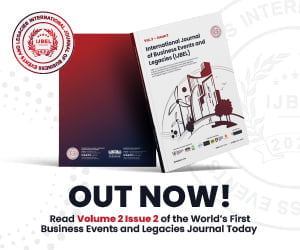Adoption Rate
What is the adoption rate?
The term “Adoption Rate” within the travel and tourism industry refers to the speed and extent to which travelers and travel service providers embrace new technologies, services, and practices.
This metric is crucial for gauging how quickly innovations, from online booking platforms to sustainable travel practices, are being integrated into the travel sector.
Adoption rate provides insight into changing consumer behaviors, technological advancements, and market dynamics. It helps industry stakeholders to tailor their offerings to meet evolving traveler needs, stay competitive, and drive growth.
Factors Influencing Adoption Rates in Travel
The rate at which new technologies, services, and practices are adopted in the travel and tourism sector is influenced by a multitude of factors. Understanding these can help industry stakeholders navigate the complexities of introducing innovations in this dynamic field.
Technological Advances
The rapid pace of technological advancement significantly impacts traveler behaviors and preferences, driving changes in how travel products and services are consumed. Innovations such as mobile boarding passes, virtual reality tours, and AI-driven personalization have reshaped expectations, offering more convenience, personalized experiences, and efficiency.
As technology makes travel more accessible and appealing, adoption rates for these innovations soar. However, the flip side is that technologies that fail to enhance the travel experience or that are perceived as overly complicated may see slower adoption. The key is in how seamlessly and beneficially these technologies integrate into the traveler’s journey.
Consumer Trends
Travelers today are more informed, connected, and environmentally conscious than ever before. This shift in consumer trends profoundly affects the adoption of new travel services. For instance, the growing emphasis on sustainability has spurred interest in eco-friendly accommodations and low-impact tourism activities, with travelers increasingly choosing options that align with their values.
Similarly, the desire for authentic and immersive experiences has led to a rise in local tours and activities, pushing the travel industry to broaden its offerings beyond traditional tourist attractions.
The demand for flexibility and customization, amplified by the COVID-19 pandemic, has also influenced the adoption rates of flexible booking options and personalized travel packages. Businesses that anticipate and adapt to these evolving consumer trends are likely to see higher adoption rates for their services.
Regulatory Environment
Regulations and policies play a crucial role in facilitating or hinding the adoption of new practices within the travel industry. For example, strict privacy regulations might slow the adoption of data-driven personalization services, while supportive policies, such as incentives for sustainable business practices, can accelerate the adoption of green travel options.
Similarly, regulations that ensure accessibility for travelers with disabilities can lead to broader adoption of accessible travel services. The regulatory environment can thus act as both a catalyst and a barrier to innovation, influencing the pace at which the travel industry adopts new technologies and practices. Understanding and navigating these regulations is essential for travel businesses looking to introduce new services and for destinations aiming to attract a broader range of visitors.
Together, these factors—technological advances, consumer trends, and the regulatory environment—shape the adoption rates of new innovations in the travel and tourism industry. By closely monitoring these elements, businesses and destinations can strategize more effectively, ensuring that their offerings not only meet current demands but are also well-positioned for future trends.
Measuring Adoption Rates
Quantitative Metrics
Quantitative metrics play a crucial role in measuring the adoption rates of new services or technologies within the travel industry. These metrics provide concrete data that can help assess the level of uptake among travelers. Common quantitative metrics include:
- Percentage of Travelers Using a New Service or Technology: This measures what portion of the target audience has adopted the innovation. For example, the percentage of hotel guests using online check-in services versus traditional front-desk check-in.
- Volume of Transactions or Bookings: This indicates the number of transactions or bookings made through a new platform or service, offering insights into its popularity and acceptance.
- Growth Rate: The rate at which the adoption of a new service or technology is increasing over time, highlighting trends and potential saturation points.
These metrics offer a snapshot of how widely a new service or technology has been accepted, providing a basis for further analysis and strategy development.
Qualitative Assessments
While quantitative metrics offer valuable insights into the adoption rates of new innovations in travel, qualitative assessments add depth to this understanding by capturing traveler perceptions, experiences, and satisfaction. Key tools for qualitative assessment include:
- User Feedback: Direct comments from users about their experiences with a new service or technology, which can highlight strengths and areas for improvement.
- Satisfaction Surveys: Surveys designed to gauge how satisfied travelers are with the new offering, often providing insights into what factors are contributing to or hindering satisfaction and adoption.
- Focus Groups: Small group discussions that can explore in-depth perceptions, attitudes, and responses to a new travel innovation, offering nuanced insights into its adoption.
Qualitative assessments help contextualize the data provided by quantitative metrics, offering a clearer picture of the factors influencing adoption rates.
Examples of Adoption Rates in Travel
Online Booking Platforms
The shift from traditional travel agency bookings to online booking platforms is a prime example of changing adoption rates in the travel industry. Online platforms have seen a significant increase in adoption due to their convenience, the breadth of options available, and often lower prices. This shift reflects broader digital transformation trends across industries.
Sustainable Travel Practices
There has been a notable increase in the adoption of eco-friendly and sustainable travel practices among tourists. This includes preferences for accommodations that implement sustainable practices, choosing overland travel over air travel when possible, and participating in conservation-oriented tours. The growing concern for environmental impact and sustainable development drives this trend.
Mobile Applications
The prevalence of travel and tourism-related mobile applications among travelers has skyrocketed. These apps cover a wide range of functionalities, from language translation and navigation to booking and itinerary planning. The convenience and real-time capabilities of mobile applications have significantly influenced their adoption rate, making them nearly indispensable tools for modern travelers.
Measuring and understanding the adoption rates of these innovations are crucial for travel businesses and destinations aiming to stay competitive and responsive to traveler needs and preferences.
The Future of Adoption Rates in Travel
Predicting Trends
The travel industry is at the forefront of adopting new innovations and technologies, with potential future advancements set to further transform travel habits and preferences. Predicting these trends involves understanding emerging technologies and societal shifts. For instance, augmented reality (AR) and virtual reality (VR) technologies are expected to become more prevalent, offering travelers immersive experiences of destinations before they even leave home. Artificial intelligence (AI) and machine learning (ML) will continue to personalize travel experiences to unprecedented levels, from tailored travel suggestions to dynamic pricing models.
Another significant trend is the increased focus on sustainability within the travel sector. As environmental concerns become more pressing, travelers are increasingly seeking out eco-friendly travel options, from carbon offsetting flights to choosing accommodations that prioritize sustainability. The adoption rate of these practices is expected to grow as awareness increases and travelers become more conscientious about their environmental impact.
Blockchain technology could also revolutionize aspects of travel, particularly in terms of secure and transparent transactions, potentially simplifying processes such as booking and identity verification. As these and other innovations continue to evolve, their adoption will significantly influence travel behaviors and industry standards.
Adapting to Change
For the travel industry to thrive in the face of changing adoption rates, flexibility and responsiveness are key. Businesses within the sector can prepare and adapt in several ways:
- Continuous Innovation: Staying abreast of technological advancements and societal trends allows travel businesses to innovate proactively rather than reactively. Investing in research and development can help companies lead the charge in introducing new services and technologies that meet evolving traveler expectations.
- Customer-Centric Approach: Keeping the traveler at the center of business strategy is crucial. This involves not only tracking changing preferences and behaviors but also engaging with customers directly to gather feedback and insights. By understanding the customer’s needs and values, businesses can tailor their offerings to better match expectations, thereby increasing adoption rates.
- Partnerships and Collaboration: Collaborating with tech companies, startups, and other sectors can provide travel businesses with access to new technologies and insights, helping them stay ahead of the curve. Strategic partnerships can also facilitate more rapid and cost-effective adoption of innovative practices.
- Flexibility and Agility: The ability to quickly adapt to market changes is a significant competitive advantage. This may involve streamlining decision-making processes, investing in adaptable technologies, and fostering a corporate culture that embraces change.
- Sustainability Focus: Given the growing importance of sustainability in travel choices, integrating eco-friendly practices into business models can attract a larger segment of the market. Demonstrating a genuine commitment to sustainability can also enhance brand loyalty and trust.
As the travel industry continues to evolve, those who anticipate changes and are prepared to adapt will be best positioned to thrive. Understanding and leveraging the dynamics of adoption rates will be critical in navigating the future landscape of travel, ensuring that businesses can meet the demands of the next generation of travelers.
Previous Term: Adjoining Rooms
Next Term: Advance Purchase Fare
A | B | C | D | E | F | G | H | I | J | K | L | M | N | O | P | Q | R | S | T | U | V | W | Y | Z



